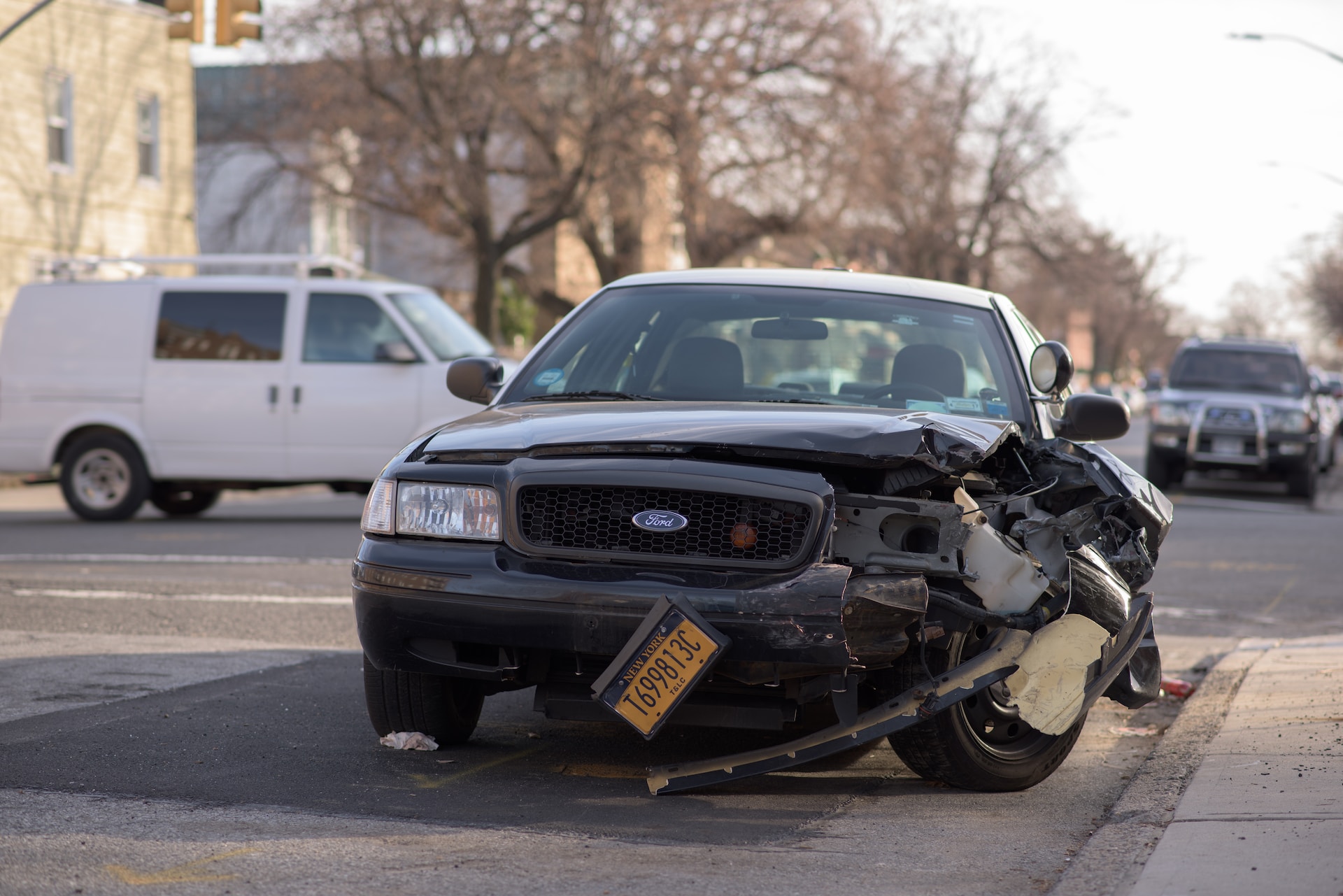Have you ever been in a car accident that wasn’t your fault, but the other driver’s insurance company refused to pay for your damages and injuries? That’s what happened to me when I was rear-ended by a GEICO customer last year. I thought I had a clear-cut case, but GEICO denied my claim, saying I was partly to blame for the crash. They offered me a lowball settlement that barely covered my medical bills, let alone my lost wages and pain and suffering.
I was furious and frustrated, but I didn’t give up. I decided to fight back and challenge their decision. And guess what? I won! Here’s how I did it, and how you can too if you ever find yourself in a similar situation.
Step 1: Understand why GEICO denied your claim
The first thing you need to do is figure out why GEICO denied your claim. There are many possible reasons, such as:
- Lack of coverage: They may argue that your claim isn’t covered by your policy or their policyholder’s policy. For example, they may say that you don’t have uninsured/underinsured motorist coverage, or that their policyholder doesn’t have enough liability coverage to pay for your damages.
- Application errors: They may claim that you or their policyholder made false or inaccurate statements on your insurance applications that invalidate the coverage. For example, they may say that you lied about your driving history or that their policyholder didn’t disclose a previous accident.
- Claim errors: They may claim that you didn’t follow the proper procedures for filing and documenting your claim. For example, they may say that you didn’t report the accident in time, that you didn’t provide enough evidence of your damages and injuries, or that you didn’t cooperate with their investigation.
- Insurance fraud: They may accuse you of submitting a fraudulent or exaggerated claim. For example, they may say that you staged the accident, that you inflated your medical bills, or that you faked or worsened your injuries.
- Bad faith denial: They may simply deny your claim without a valid reason or explanation, hoping that you will accept their offer or give up on pursuing your claim.
To find out why GEICO denied your claim, you need to read their denial letter carefully and ask them for clarification if anything is unclear. You also need to review your own policy and their policyholder’s policy to see what coverages apply and what exclusions exist. You should also check the applicable state and local traffic laws to see who was at fault for the accident.
Step 2: Gather evidence to support your claim
The next thing you need to do is gather as much evidence as possible to support your claim and refute GEICO’s denial. Some of the evidence you may need includes:
- Police report: This is a document that records the details of the accident, such as the date, time, location, weather conditions, witnesses, injuries, damages, citations issued, and fault determination. You can request a copy of the police report from the law enforcement agency that responded to the scene.
- Photos and videos: These are visual records of the accident scene and the vehicles involved, showing the damage, skid marks, debris, road signs, traffic signals, weather conditions, injuries, etc. You should take photos and videos of the accident scene as soon as possible after the crash, or ask someone else to do it for you if you are unable to.
- Witness statements: These are written or recorded accounts of what happened during the accident from people who saw it or heard it. You should get the names, phone numbers, addresses, and email addresses of any witnesses at the scene and contact them later to get their statements.
- Medical records: These are documents that show the extent of your injuries and the treatment you received as a result of the accident. You should keep copies of all your medical bills, receipts, prescriptions, diagnoses, test results, etc., and follow your doctor’s instructions for your recovery.
- Lost wages: These are documents that show how much income you lost due to missing work
Step 3: Negotiate with GEICO for a fair settlement
The third thing you need to do is negotiate with GEICO for a fair settlement that covers all your damages and injuries. This is not an easy task, as GEICO is known for being a tough negotiator that will try to minimize your claim and pay you as little as possible. Here are some tips to help you negotiate effectively with GEICO:
-
Know your case value:
Before you start negotiating, you need to have a realistic idea of how much your case is worth. You can use online calculators or consult with a personal injury lawyer to estimate your case value based on your medical bills, lost wages, pain and suffering, and other factors. You should also consider any future expenses or losses that may result from your injuries, such as ongoing treatment, reduced earning capacity, or permanent disability.
-
Don’t accept the first offer:
GEICO will likely make you a lowball offer at first, hoping that you will accept it and close the case quickly. Don’t fall for this tactic. Reject the first offer and explain why it is unacceptable. Provide evidence to support your claim and demand a higher amount that reflects your case value.
-
Don’t admit fault or apologize:
GEICO may try to blame you for the accident or make you feel guilty for asking for compensation. Don’t let them manipulate you. Don’t admit fault or apologize for anything that happened during the accident. Stick to the facts and focus on how the accident affected you and your life.
-
Don’t sign anything without reading it carefully:
GEICO may ask you to sign a release form or a settlement agreement that waives your right to sue them or their policyholder in the future. Don’t sign anything without reading it carefully and understanding what it means. If you have any doubts or questions, consult with a lawyer before signing anything.
-
Be patient and persistent:
Negotiating with GEICO can take time and patience. They may delay the process, ignore your calls, or make unreasonable demands. Don’t give up or settle for less than you deserve. Keep following up with them and remind them of your evidence and your case value. If they refuse to budge or make you a fair offer, be prepared to take legal action.
Step 4: Hire a lawyer if necessary
The fourth thing you need to do is hire a lawyer if necessary. Sometimes, negotiating with GEICO on your own can be too difficult or stressful, especially if you have severe injuries, complex damages, or disputed liability. In these cases, hiring a lawyer can be a smart move. A lawyer can:
- Review your case and advise you on your legal options
- Gather more evidence and expert opinions to strengthen your claim
- Handle all the communication and paperwork with GEICO
- Negotiate on your behalf for the best possible settlement
- Represent you in court if your case goes to trial
Hiring a lawyer doesn’t mean you have to pay upfront fees or expenses. Most personal injury lawyers work on a contingency fee basis, which means they only get paid if they win your case or secure a settlement for you. The typical contingency fee is between 25% and 40% of your recovery amount.
Step 5: Celebrate your victory
The fifth thing you need to do is celebrate your victory. If you successfully negotiate with GEICO or win your case in court, you deserve to celebrate your hard work and perseverance. With your settlement money, you have the flexibility to address various needs. You can pay off your medical bills, repair or replace your vehicle, cover your living expenses, and even treat yourself to something nice. The possibilities are endless when it comes to utilizing your settlement funds.
You can also share your story with others who may be in a similar situation as you were. You can write a review online, post on social media, or join a support group for car accident victims. By sharing your experience and tips, you can help others who are struggling with GEICO or other insurance companies.
You can also use this opportunity to review your own insurance policy and make sure you have adequate coverage for yourself and your family in case of another accident. You can shop around for better rates, discounts, or features from different insurers.
Remember that car accidents can happen anytime and anywhere, so it’s always good to be prepared and protected.
Conclusion
GEICO is one of the largest and most popular insurance companies in the U.S., but that doesn’t mean they are always fair or easy to deal with when it comes to car accident claims.
If you’ve been in a car accident and GEICO denied your claim, don’t lose hope. You can fight back and get the compensation you deserve. You just need to follow the steps I outlined in this article and be prepared to negotiate or sue them if necessary.
Of course, you don’t have to do it alone. If you need help with your claim, you can always contact a reputable and experienced personal injury lawyer who can guide you through the process and represent your best interests.
Don’t let GEICO get away with denying your claim or offering you a lowball settlement. You have rights and options, and you deserve justice. Contact a lawyer today and get started on your case.
I hope this article was helpful and informative for you. If you liked it, please share it with your friends and family who may benefit from it. And if you have any questions or comments, please leave them below. I’d love to hear from you.
Thank you for reading and good luck with your claim!
Useful Resources
The last thing you need to do is learn from useful resources and multiple sellers that can help you with your car accident claim. There are many websites, books, blogs, podcasts, videos, and courses that can provide you with valuable information and advice on how to deal with GEICO or other insurance companies. Some of these resources are:
-
AllLaw:
This is a website that offers legal information and tips on various topics, including car accidents, personal injury, insurance claims, lawsuits, settlements, and more. You can find articles, guides, FAQs, calculators, forms, and directories of lawyers on this site.
-
Forbes Advisor:
This is a website that provides expert advice and insights on various topics, including legal, insurance, finance, investing, travel, and more. You can find articles, reviews, comparisons, calculators, tools, and newsletters on this site.
-
Accident.com:
This is a website that connects you with experienced personal injury lawyers who can help you with your car accident claim. You can get a free consultation and a no-win-no-fee guarantee from this site.
-
Car Accident Settlements:
How to Negotiate More Money with the Insurance Company: This is a book by David J. Marquard that teaches you how to negotiate a higher settlement with the insurance company after a car accident. You can learn how to prepare your case, communicate with the adjuster, counter lowball offers, avoid common mistakes, and more from this book.
-
The Car Accident Claims Kit Second Edition:
This is a book by Anthony Steele that shows you how to handle your own car accident claim without hiring a lawyer. You can learn how to document your injuries and damages, deal with the insurance company, negotiate a fair settlement, file a lawsuit if necessary, and more from this book.
-
The Car Accident Podcast:
This is a podcast by attorney Jim Adler that covers various topics related to car accidents, such as liability, insurance claims, lawsuits, settlements, injuries, damages, and more. You can listen to episodes on Spotify or Apple Podcasts.
-
How To Negotiate A Car Accident Settlement With GEICO:
This is a video by attorney John Kelly that explains how to negotiate a car accident settlement with GEICO. You can watch the video on YouTube or visit his website for more information.
In addition to these resources, you can also benefit from comparing multiple sellers of car insurance policies. By shopping around and comparing different rates, discounts, coverages, features, and customer reviews of different car insurance companies, you can find the best policy for your needs and budget. You can also switch to a better insurer if you are unhappy with your current one.
Some of the benefits of comparing multiple sellers are:
- You can save money by finding lower premiums or better discounts
- You can get more coverage or better features for the same price or less
- You can find an insurer that has a good reputation and customer service
- You can avoid overpaying or underinsuring yourself
Some of the drawbacks of comparing multiple sellers are:
- You may have to spend time and effort to research and compare different options
- You may have to deal with multiple agents or websites
- You may have to cancel your existing policy and pay fees or penalties
- You may lose some benefits or discounts from your current insurer
To compare multiple sellers, you can use online tools such as NerdWallet, The Zebra, Insurify, or Compare.com. These tools allow you to enter your personal and vehicle information and get quotes from different insurers in minutes. You can also contact insurers directly or use an independent agent or broker to help you find the best deal.
Disclaimer
This article is for informational purposes only and does not constitute legal advice. The information provided is based on general principles and may not apply to your specific situation. You should consult with a qualified personal injury lawyer before taking any action regarding your car accident claim. The author is not affiliated with or endorsed by any of the resources or sellers mentioned in this article. The author is not responsible for any errors or omissions in this article or any consequences arising from your use of this information.







